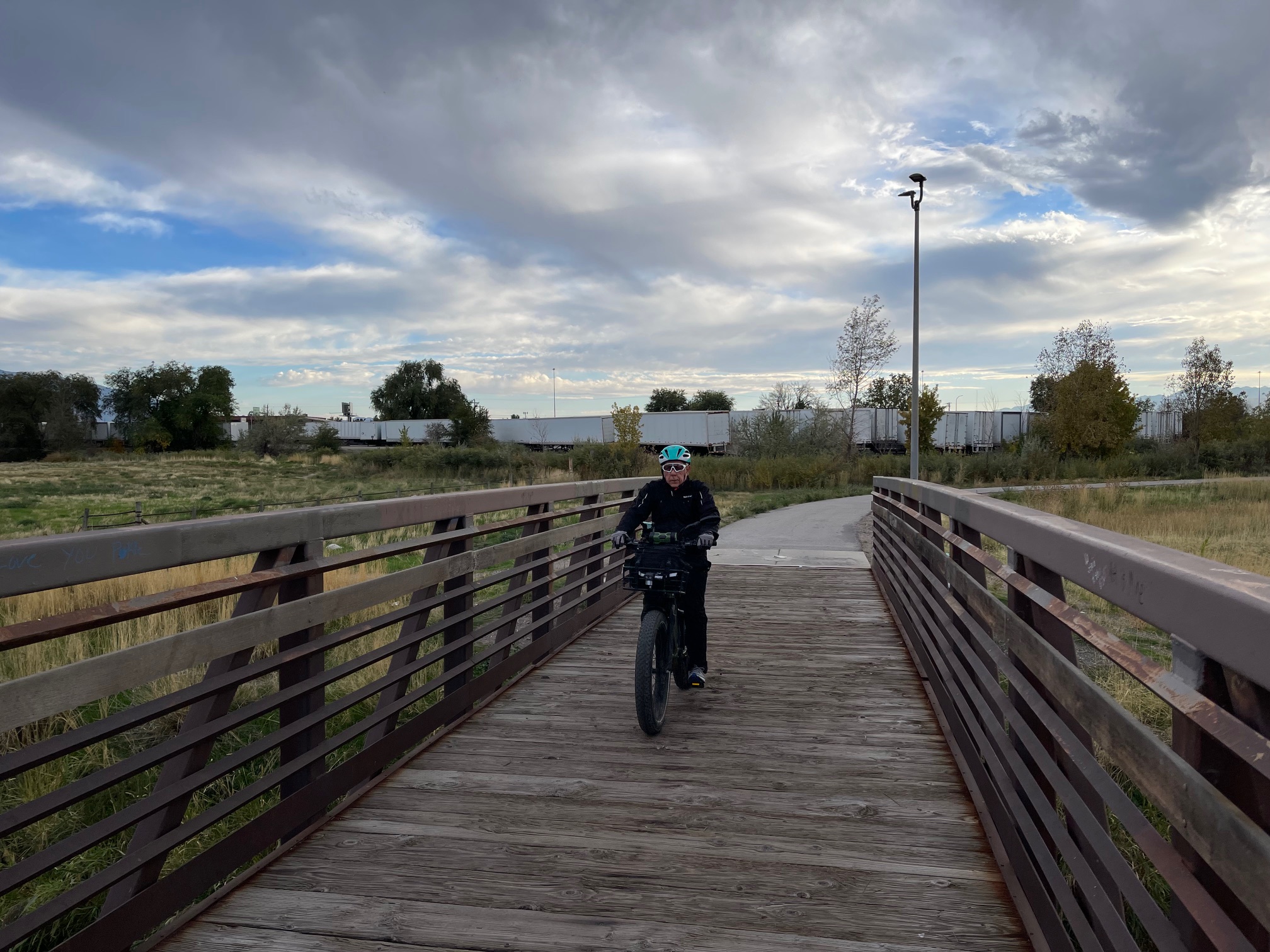E-bikes make urban air clearer by getting people out of their cars. But less clear is if making e-bikes more affordable will expand their use. So conclude a pair of studies from an ongoing e-bike research project at the Transportation Research and Education Center (TREC) at Portland State University in Oregon.
TREC and other research institutions are collaborating on the Light Electric Vehicle Education and Research (LEVER) Initiative, which is studying all aspects of the use of e-bikes from policies to impacts to getting people to use them.
Cities around the world in recent years have added to bicycle infrastructure for, among other reasons, the need to reduce smog by moving people out of their autos. And despite some success, the level of bicycling has only gone up so much and may have come close to peaking. E-bikes could increase the level of biking and reduce the level of carbon emissions both by getting more people onto bikes and by encouraging bicyclists to go further, suggests TREC’s recent white paper The E-Bike Potential: Estimating the Effect of E-bikes On Person Miles Traveled and Greenhouse Gas Emissions (https://ppms.trec.pdx.edu/media/project_files/E-bike_Potential_Paper_05_15_19_Final_jHFUiVl.pdf).
TREC, naturally, did its research in Portland, Oregon. It concluded that the “strategy of increasing e-bike mode share within a given region can…be used confidently as a tool to help meet that region’s carbon emission reduction goals.” If 14-15 percent of trips were on bikes or e-bikes, emissions could drop 11 percent, the study estimates.
How to Get More People on E-Bikes
That begs the question of how to get people on e-bikes. Another TREC study examined efforts to do that. How E-Bike Incentive Programs are Used to Expand the Market (https://ppms.trec.pdx.edu/media/project_files/E-bike_Incentives_Paper_05_15_19_Final_1.pdf) looked at incentive programs to get people to use them. Results came back mixed and inconclusive.
An experiment in Switzerland that gave 1,800 people free use of an e-bike for two weeks on the condition they not drive their cars found that 27 percent of them liked their trial two-wheelers so much that they bought one. A program in Holland in 2013 paid people per mile ridden on an e-bike. It increased use for sure, but only about half of the extra miles came at the expense of auto trips and it’s not clear to what degree people continued riding e-bikes once the trial ended.
Several other programs in Great Britain and the United States showed that giving people access to an e-bike for a limited period even without compensating them will encourage some to buy one, because they’ve had a cost-free positive experience. A problem, though was that e-bikes tend to cost more than people wanted to spend.
Would rebates work? Programs in Vietnam and California found that waiving the tax proved a better incentive than offering buyers a rebate equal to the tax.
Employers and communities have tried everything from discounts to cheap loans, government subsidies and employer subsidies. The Cycle to Work program in Britain allows employers to write off the cost of e-bikes that they loan to employees to commute to work.
Incentives work better with some employers than others. Live Electric offered a discount program to Utah state employees and employees of Rocky Mountain Power in Utah starting last fall. TREC reports that the University of Utah eagerly promoted the program and got a good response but other agencies didn’t sell as many as they didn’t promote it as well.
People bought about 400 e-bikes in Boulder County, CO in a program that called on the vendors to offer discounts in return for the county government marketing the offer. But the program only worked for so long. Vendors quit when sales slowed.
TREC researchers acknowledge that they couldn’t determine the long-term effects of e-bike incentives, nor the relationship between the size of the incentive to the cost of the bikes.
And what’s next for LEVER? Consortium members are working on a project called Novel Approaches to Model Travel Behavior and Sustainability Impacts of E-Bike Use. They are looking for volunteer e-bike users to participate in a year-long study that will “leverage smartphones to conduct ad-hoc travel surveys to supplement the passive data collection and, using machine learning algorithms, create the largest and richest dataset to support the growth of e-bike use as a transportation option.”
Participants must already own an e-bike. If you’re interested in participating or want more data, go to https://docs.google.com/forms/d/e/1FAIpQLSfZv-aBiZUWRLEtiW6ZzcPXy-Ik-_OIpc8pw9gf7Rg98BbF_w/viewform.
Do E-Bikers Get More Exercise?
And in a continent that you can’t get to from America by e-bike, researchers wanted to examine whether riding one will result in a net increase or decrease in physical activity. The answer, as you might have expected, depends on whether you switch to an e-bike from a regular bike or from an auto. The study looked at 10,000 e-bikers in seven European cities.
The study reports “e-bike use leads to substantial increases in physical activity in e-bikers switching from private motorized vehicle and public transport, while net losses in physical activity in e-bikers switching from cycling were much less due to increases in overall travel distance.”
But e-bikers rode longer distances than conventional bikers, and thus used more pedal strokes. But the research didn’t explain to what degree e-bikers were former conventional cyclists who switched to longer rides vs. those who didn’t bike before.
See Castro, Alberto, et al. “Physical activity of electric bicycle users compared to conventional bicycle users and non-cyclists: Insights based on health and transport data from an online survey in seven European cities.” Transportation Research Interdisciplinary Perspectives (2019): 100017., https://doi.org/10.1016/j.trip.2019.100017.







